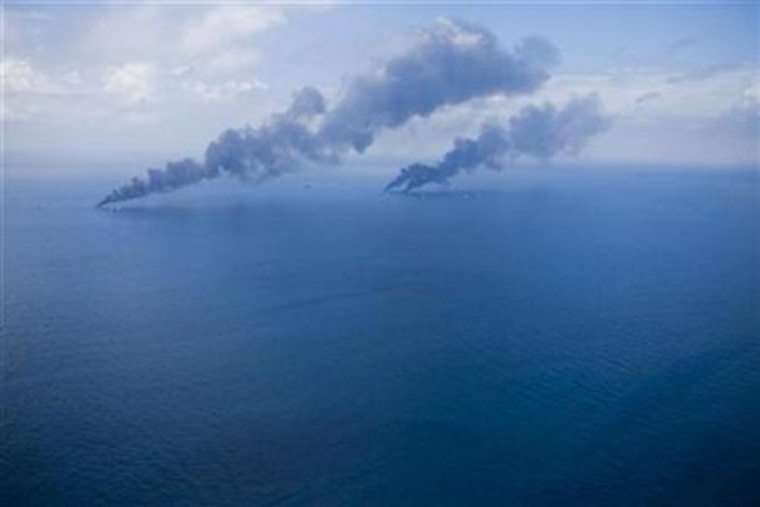Toxic chemicals at levels high enough to kill sea animals extended deep underwater soon after the BP oil spill, U.S. researchers reported on Tuesday.
They found evidence of the chemicals as deep as 3,300 feet and as far away as 8 miles in May, and said the spread likely worsened as more oil spilled.
The chemicals, called polycyclic aromatic hydrocarbons or PAHs, can kill animals right away in high enough concentrations and can cause cancer over time.
"From the time that these observations were made, there was an extensive release of additional oil and dispersants at the site. Therefore, the effects on the deep sea ecosystem may be considerably more severe than supported by the observations reported here," the researchers wrote in the journal Geophysical Research Letters.
The Deepwater Horizon oil drilling rig exploded in April, killing 11 workers and spilling about 4.9 million barrels or 185 million gallons of crude oil.
Terry Wade of Texas A&M University, Steven Lohrenz of the University of Southern Mississippi and Stennis Space Center and colleagues began testing the waters around the spill soon afterwards.
Environmental experts were most worried about the PAHs because they are so toxic, but not much was known about how long they could last in the water or how long it would take them to dissipate.
The initial tests showed they were at high levels very deep under the water, the report shows.
"Based on our findings, subsurface exposure to PAH resulting from the Deepwater Horizon oil release was likely to be associated with acute toxicity effects in discrete depth layers between 1,000 and 1,400 meters in the region southwest of the wellhead site and extending at least as far as 13 km," the research team wrote.
PAHs include a group of compounds, and different types were at different depths, they said.
It is possible they dissipate quickly, but no one has yet showed this, they added.
"Our findings suggest that toxicity effects of the subsurface PAH compounds could have extended at least as far as 13 km from the wellhead site," the researchers said.
In September a team at Oregon State University said they found alarming levels of PAHs in the region, 40 times higher than before the area was affected by the oil spill.
Last week, the Food and Drug Administration and National Oceanic and Atmospheric Administration said testing had helped confirm that chemicals used to disperse oil from the BP spill have not made their way into fish, crabs, shrimp or oysters from the Gulf of Mexico.
